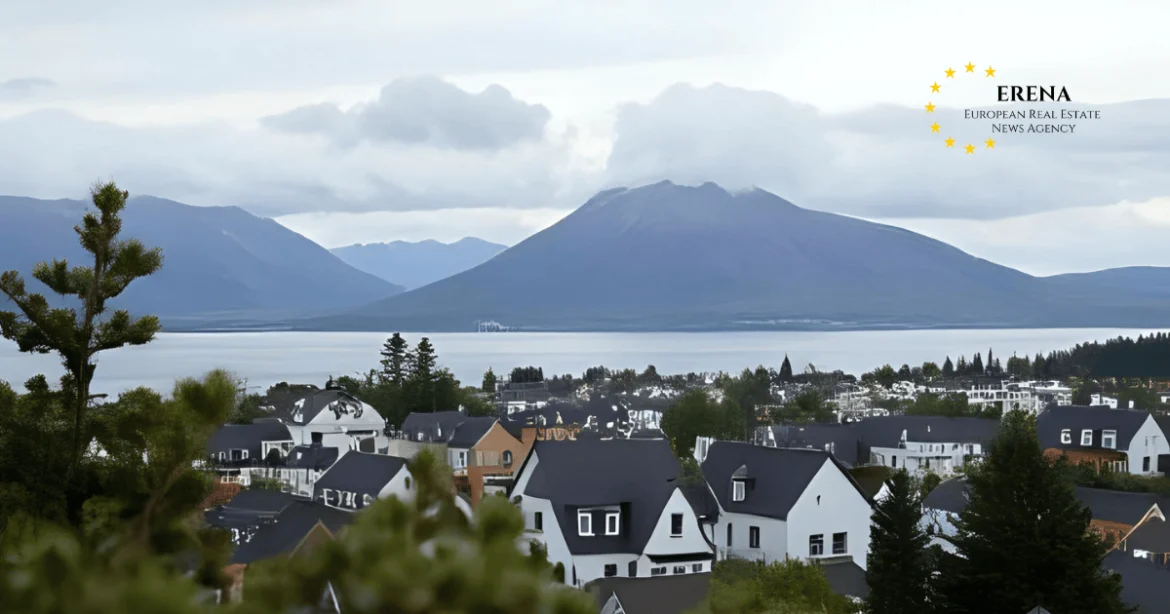Akureyri, known as the “Capital of the North,” has become one of Iceland’s most resilient real estate markets in 2025. While Reykjavík and other regions show signs of cooling, Akureyri continues to attract steady demand from locals and international buyers, driven by limited supply, infrastructure upgrades, and a strong lifestyle appeal.
Prices in 2025: Confirmed Data
According to Registers Iceland and the Housing and Construction Authority, the average price for multifamily housing in Akureyri reached ISK 605,642 per square meter at the start of 2025. At current exchange rates, that equals roughly €4,230/m². A typical 87.5 m² flat costs about ISK 52.98 million.
Detached homes average ISK 545,255 per m² (around €3,810/m²), with a standard 155 m² house priced at ISK 84.65 million.
By neighborhood, Naustahverfi leads with an average of ISK 678,631/m², followed by Glerárhverfi at ISK 602,083/m². These figures underline Akureyri’s steady growth compared to areas where prices have slowed.
Market Conditions
Nationally, Iceland’s housing market is showing buyer-friendly trends, with slower transactions and longer listing times. In contrast, Akureyri has held firm thanks to a growing population, reliable services, and consistent housing demand. Local reports also suggest that bargains are still available in nearby Eyjafjörður, where prices remain below city levels.
The city’s role as a regional hub is another factor supporting resilience. Akureyri hosts the main hospital for northern Iceland, the University of Akureyri, and a growing technology and logistics sector. These institutions provide stable employment, reinforcing long-term housing demand.
Mortgage Landscape
Financing costs remain a central issue:
- Indexed mortgages: typically 4–5%.
- Non-indexed mortgages: range between 8% and 10%.
These rates create challenges for affordability, particularly for first-time buyers. For many, this makes careful financial planning essential. Buyers are increasingly weighing the stability of indexed loans against the flexibility—but higher cost—of non-indexed options.
Rental and Investment Potential
Tourism continues to support Akureyri’s housing market. The city has become a gateway for travelers exploring northern Iceland, including the Arctic Coast Way, whale-watching tours, and ski resorts like Hlíðarfjall. This steady tourist flow translates into strong demand for short-term rentals.
Analytics show that hosts can achieve significant seasonal income, but Icelandic regulations limit unlicensed home-hosting to 90 days annually and ISK 2 million in income. For investors aiming to exceed this threshold, a hotel or guesthouse license is required. Compliance costs should be factored into any investment plan.
Beyond short-term rentals, the student and healthcare workforce population creates solid demand for long-term leases. Apartments close to the university and hospital are particularly attractive for investors who prefer predictable annual rental income.
Comparison with Reykjavík
Reykjavík remains Iceland’s most expensive market, with many districts averaging over ISK 800,000 per m² (roughly €5,600–6,000/m²). Compared to that, Akureyri offers more affordable entry points while maintaining robust year-on-year appreciation. For buyers priced out of the capital, Akureyri provides an appealing balance of affordability and lifestyle.
Moreover, while Reykjavík has seen signs of stagnation in 2025, Akureyri’s verified data show consistent growth. This positions the northern city as a safer bet for buyers looking for stability rather than speculative peaks.
What’s Driving Demand?
- Lifestyle Appeal: Proximity to mountains, ski slopes, and the fjord makes Akureyri attractive to families and professionals seeking balance between work and leisure.
- Public Investment: Ongoing infrastructure projects, including road upgrades and school expansions, support long-term growth.
- Demographics: A younger, growing population around the university and healthcare facilities ensures continuous housing needs.
- International Interest: Buyers from mainland Europe—especially Germany, the Netherlands, and France—are drawn by Iceland’s reputation for safety, clean energy, and natural beauty.
Should You Buy Now?
Reasons to buy:
- More affordable than Reykjavík on a per-square-meter basis.
- Consistent year-on-year price growth in key neighborhoods.
- Strong lifestyle appeal with cultural amenities, schools, and healthcare.
- Potential for both seasonal and long-term rental income.
Reasons to wait:
- High mortgage rates raise overall costs and may limit short-term returns.
- The broader national market is cooling, creating room for negotiation.
- Short-term rental income is capped by regulation, requiring long-term commitment.
Outlook
Akureyri remains one of Iceland’s strongest real estate markets in 2025. Verified sales data show steady appreciation, particularly in Naustahverfi and Glerárhverfi, even as the wider market slows. Infrastructure development, stable employment sectors, and the city’s cultural and natural appeal make it an enduring choice for families and investors alike.
For buyers seeking long-term stability, relative value compared to Reykjavík, and the quality of life that northern Iceland offers, Akureyri is an attractive option. Those willing to negotiate or wait may find more favorable terms if national cooling deepens, but overall, the city stands out as a compelling, resilient market.

